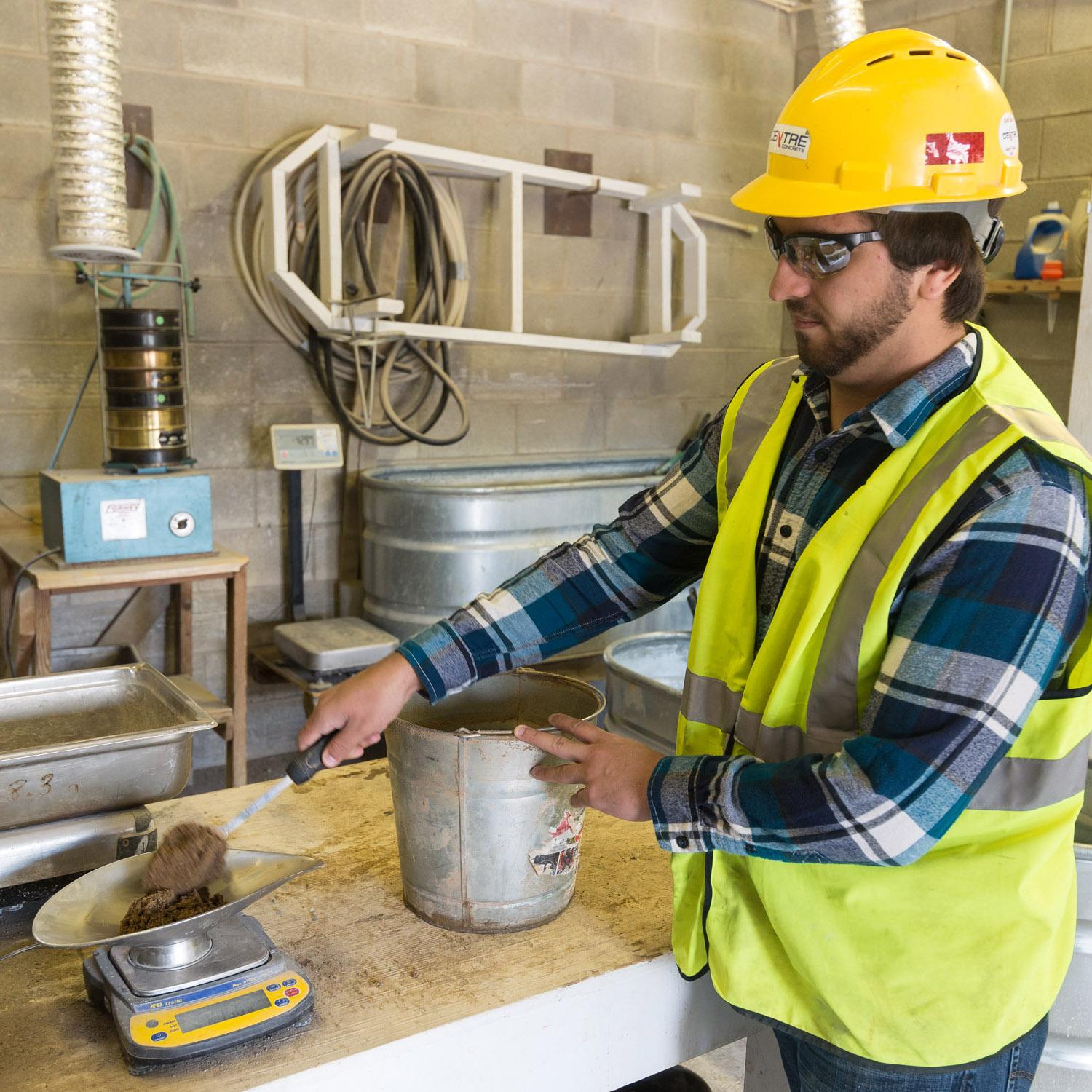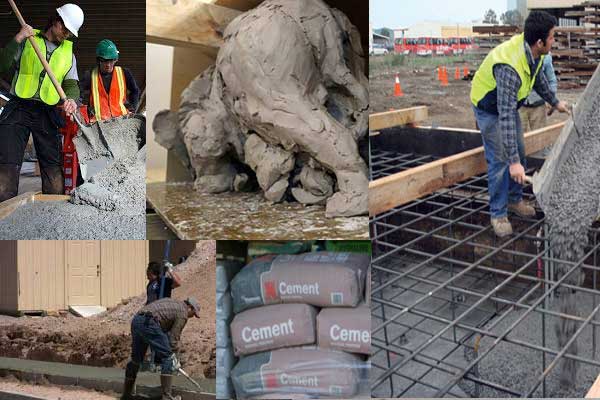The Crucial Role of Concrete Structure in Structural Stability and Durability
When it involves developing a home, the foundation is extra vital than you may assume. Concrete structures offer unparalleled strength and durability, guaranteeing your structure can stand up to numerous environmental difficulties. Without a solid base, you risk prospective issues like changing or cracking, which can jeopardize safety and security and value. Recognizing the subtleties of concrete structures could be the trick to protecting your investment for several years to come. What should you consider following?
Comprehending the Relevance of Concrete Foundations
Concrete foundations are crucial to the total stability of any kind of framework, as they give the necessary assistance needed to hold up against various lots and ecological conditions. When you believe concerning developing a home or a business room, the structure is the first point you should take into consideration. It works as an obstacle versus wetness, safeguarding your property from water damages. A well-placed concrete foundation additionally protects against settling and moving, which can result in fractures in walls and floors. You'll want to guarantee that the foundation is appropriately created and enhanced, as this influences the long life of your building. Additionally, a strong structure can boost power performance by minimizing air leaks. Remember, disregarding the value of a concrete foundation can result in costly repair services down the line. Spending in a high quality foundation upfront is necessary for the stability and toughness of your structure.
Benefits of Concrete Foundations for Structural Honesty
While numerous variables add to a building's architectural honesty, concrete foundations supply unrivaled resilience and toughness. You'll appreciate that concrete can endure severe weather, withstanding both dampness and temperature fluctuations. This durability suggests your structure is less most likely to experience fracturing or moving with time, which can compromise its safety.Additionally, concrete's fundamental weight supplies a solid base, stopping movement during natural occasions like quakes or floods. When you choose a concrete structure, you're additionally opting for reduced upkeep; unlike wood, it will not rot or bring in parasites, conserving you money and time in repairs.Moreover, concrete's fire resistance uses included safety, guaranteeing your structure can sustain heats without considerable damages. Generally, buying a concrete foundation indicates you're focusing on the long-term stability and integrity of your structure, making it a wise selection for any type of construction job.
Typical Types of Concrete Foundations
When it comes to constructing structures, recognizing the usual sorts of concrete foundations can aid you make notified choices for your project. The most widespread kinds consist of slab-on-grade, crawl space, and full basement foundations.A slab-on-grade foundation is a basic, cost-efficient option, where a thick concrete slab is put directly on the ground. This type works well in cozy environments, as it reduces warmth loss.Crawl room foundations elevate the home a little above ground, enabling for ventilation and access to plumbing and electrical systems. This design can aid stop dampness issues.Full basement foundations use additional living or storage area while giving excellent structural assistance. They call for more excavation and are usually made use of in cooler environments to protect against frost heave.
Factors to Consider When Designing a Concrete Structure

Ideal Practices for Setting Up Concrete Foundations
When you're setting up a concrete foundation, proper site preparation is necessary to assure stability (West Coast General Engineering Concrete). You'll likewise require to comprehend support strategies to enhance strength and longevity. Do not overlook the curing process, as it plays an essential function in accomplishing a solid foundation.
Site Prep Work Relevance
Although it might appear uncomplicated, appropriate website preparation is important for assuring a solid and long lasting concrete structure. Begin by removing the area of any particles, plant life, or natural product that can jeopardize the foundation's integrity. Next, analyze the soil kind and compaction; you could require to dig deep into or include materials to produce a steady base. Level the ground to guarantee also weight distribution and avoid resolving problems in the future. Setting up appropriate drain systems is additionally important to stop water buildup, which can damage the structure with time. Mark out the structure's measurements properly to assist the putting procedure. By complying with these steps, you'll set the phase for a successful concrete structure that stands the examination of time.
Reinforcement Methods Discussed
As soon as the site is properly prepared, the next action in guaranteeing a tough concrete foundation involves implementing effective support strategies. You ought to start by utilizing steel rebar, which provides tensile toughness and assists avoid fracturing. Lay the rebar in a grid pattern, ensuring it rises making use of spacers to maintain proper coverage. In addition, think about using cord mesh for added support, especially in areas based on hefty loads. Do not fail to remember to link the rebar intersections securely with cord. For bigger structures, fiber reinforcement can enhance sturdiness, lowering the risk of contraction fractures. Constantly comply with regional structure codes and guidelines to make sure compliance. By applying these reinforcement strategies, you'll considerably boost your structure's strength and long life, laying a strong groundwork for your structure.
Curing Process Essentials
To guarantee your concrete foundation cures effectively, it is necessary to preserve appropriate wetness and temperature conditions right away after pouring. Start by covering the surface area with a damp burlap or plastic sheet to keep moisture. This keeps the concrete moisturized, preventing cracks and making certain toughness. You should additionally monitor the temperature level; ideal curing conditions are between 50 ° F and 90 ° F. If it's too warm, mist the surface area consistently to avoid rapid evaporation. For cool climate, think about using insulating coverings to preserve warmth. Purpose for a curing duration of a minimum of 7 days, as this is essential for ideal toughness growth. By following these finest techniques, you'll improve your foundation's resilience and long life, ensuring structural stability for years to find.
Upkeep of Concrete Foundations for Durability
To maintain your concrete structure strong and long-term, regular inspections are crucial. blog You should also assure efficient drain services remain in location to avoid water damages. If you find any type of splits, addressing them immediately will conserve you from bigger problems down the line.

Normal Assessments and Evaluations
While routine assessments and assessments may appear like a job, they're necessary for preserving the honesty of your concrete structure. By consistently looking for cracks, changes, or indicators of wear, you can catch possible issues prior to they intensify into expensive fixings. Search for any water merging around the structure or unusual settling, as these can signify underlying issues. It's additionally smart to check any type of modifications in your house's framework, like doors that stick or home windows that don't open efficiently. Keeping a record of your inspections helps track modifications gradually, enabling for positive upkeep. Inevitably, these analyses assure your structure stays secure, supporting the longevity and security of your entire structure. Don't forget have a peek at these guys this crucial aspect of homeownership!
Effective Drainage Solutions
Normal evaluations can reveal concerns like water drainage troubles that might compromise your concrete structure's stability. To prevent water buildup, assure your gutters and downspouts straight water far from the structure. Installing French drains can efficiently reroute surface and groundwater, decreasing stress on your foundation walls. Additionally, rating the soil around your home helps guarantee that water moves away, instead than merging near your foundation.Consider using sump pumps in areas vulnerable to flooding, as they proactively remove excess water. On a regular basis check for blockages in drain systems and clear them without delay. You'll secure your foundation's integrity and longevity by taking these aggressive measures. Bear in mind, effective drain solutions are essential for preserving a solid, sturdy concrete foundation.
Trigger Crack Repairs
When you see fractures in your concrete structure, resolving them quickly is important for preserving its longevity. Small splits can promptly progress into bigger issues, endangering the structural stability of your home. On a regular basis evaluate your foundation for indicators of damages, such as horizontal or upright cracks. If you detect any, do not wait-- repair them instantly. You can use epoxy injections or concrete patching substances, which work for securing fractures. Always follow the producer's directions and think about speaking with a professional for substantial damage. Bear in mind, timely repair services not just boost your structure's durability yet likewise save you money over time by preventing extra comprehensive repairs down the line. Stay positive, and your foundation will certainly continue to be solid and secure.
Resolving Usual Concerns With Concrete Foundations
Concrete structures can face various concerns gradually, making it critical to recognize and address them without delay. Among the most typical troubles is fracturing, which can take place as a result of temperature fluctuations or clearing up dirt. If you see fractures, it's necessary to examine their dimension and deepness; little cracks can typically be secured, while larger ones may require professional evaluation.Water invasion is one more significant concern. Excess moisture can bring about mold and mildew development and structural damage. Assurance correct drainage around your foundation to minimize this risk. Furthermore, try to find signs concrete block retaining wall of shifting or bowing walls, as this can show underlying problems with your structure's stability.Regular examinations are essential to capture these troubles early. If you spot any type of worrying indicators, do not think twice to consult a foundation expert. By remaining positive, you can preserve the stability and longevity of your concrete structure, assuring your home remains risk-free and safe.
Regularly Asked Concerns
How Does Dirt Kind Influence Concrete Foundation Performance?
Soil kind greatly affects concrete structure efficiency. If you have actually obtained extensive clay, as an example, it can cause changing and fracturing. Sandy dirt may result in working out. Recognizing your dirt helps assure a secure structure.
Can Concrete Foundations Be Repaired if Harmed?
Yes, you can fix damaged concrete structures. Depending upon the extent of the damages, strategies like epoxy shot or piece jacking can recover security. It's finest to get in touch with a professional for reliable solutions.
What Is the Regular Life Expectancy of a Concrete Structure?
A concrete foundation usually lasts 30 to 100 years, depending upon aspects like soil conditions, climate, and upkeep. You'll want to keep an eye on it to ensure it stays in great shape throughout its life expectancy.
Exist Choice Materials to Concrete for Foundations?
Yes, there are options to concrete for foundations, like steel, hardwood, or also recycled materials. Each option has one-of-a-kind advantages and downsides, so you ought to consider your project's details needs when picking the appropriate product.
How Does Climate Effect Concrete Foundation Sturdiness?
Environment greatly influences concrete foundation toughness (WCGE commercial concrete). Severe temperature levels, dampness, and freeze-thaw cycles can compromise the material, causing cracks and architectural concerns. You should consider regional environment problems when planning your structure to assure long-lasting efficiency